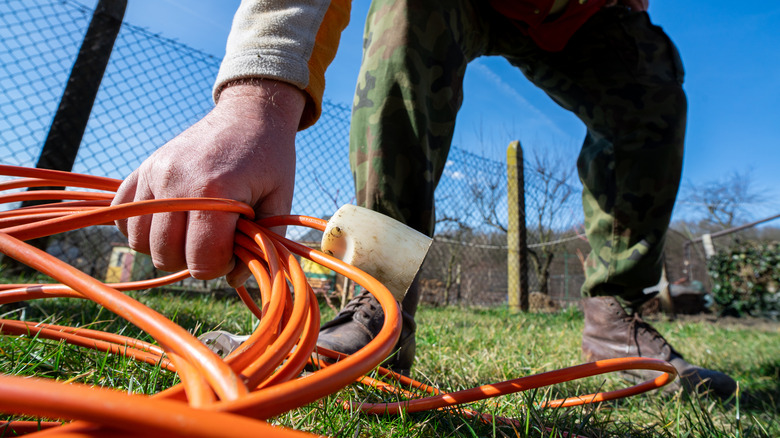The Trick You Need To Keep Your Extension Cords Tangle-Free
We've all been there, thinking we've mastered the art of coiling an extension cord. It looks neat and pretty when hung up; then, the inevitable moment of dread when you go to unravel it, and it turns into a cat's cradle gone wrong. Maybe you're resigned to just leaving your cords plugged in or in a tangled mess because you feel like no matter what you do, they always end up tangled anyway. But those scenarios are never safe, as they make for tripping hazards and even short-circuit fire risks.
Well, we're happy to say there's an easier method to coiling your extension cords to be tangle-free every time. The secret is a little more counter-intuitive than you might think, but it's proven to rid your cords of twists and snags. It all starts by coiling your cord in a traditional way, holding one end of the cord with one hand and forming loops with the other. The trick here is twisting every other loop you make, alternating a standard loop over your coil with an underhanded loop tucked in from below. That said, you may find this method tricky to perform if your cable is brand new and relatively untrained. In this case, you'll want to leave the cable out in the sun for several hours to help it relax before trying this technique.
How To Use The Over-Under Technique
What's happening with these alternating loops is that you're keeping space between each one, which prevents overlapping areas from creating slip knots when it comes time to uncoil. With this approach, you'll have a much more successful time tossing the length of the cord without worrying about time-wasting tangles. This approach can be used on heavy-duty extension cords, AV cables used by stage technicians, and even woven ropes.
Learning to coil your cords properly won't just save you time and hassle, but it's also necessary in preserving the life of your cords. Knots and tangles create harsh angles for cord fibers, which, if stored in that way for long periods, will deteriorate the cords at those points of stress. This trick might take a little getting used to, but we're confident it's the best solution out there in terms of speed and reliability. Try giving it a shot! You might save yourself a few minutes of frustration the next time you need to hook up a portable generator to your house or use a corded electric outdoor yard tool.
